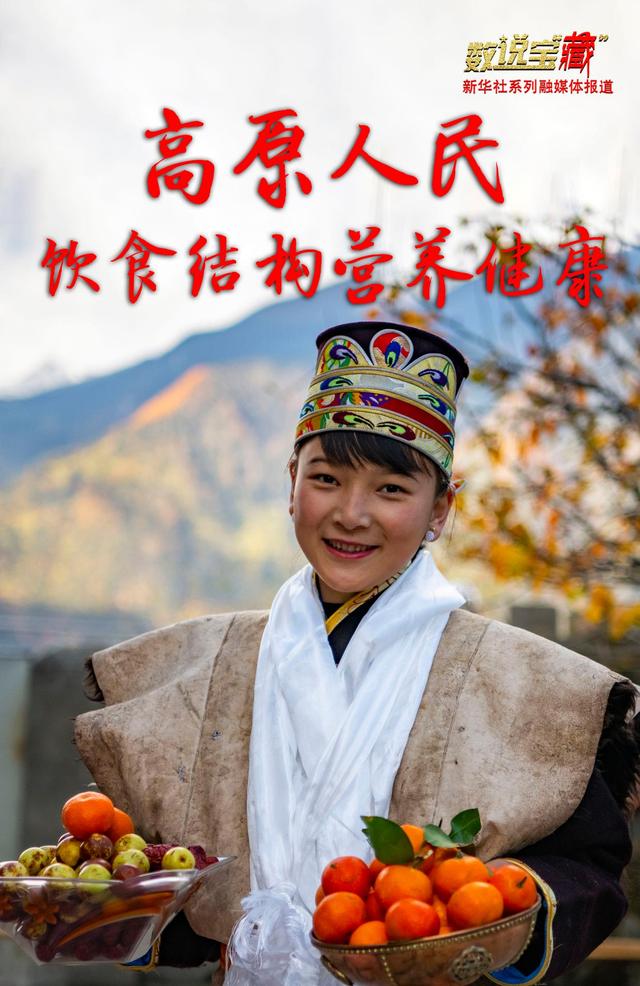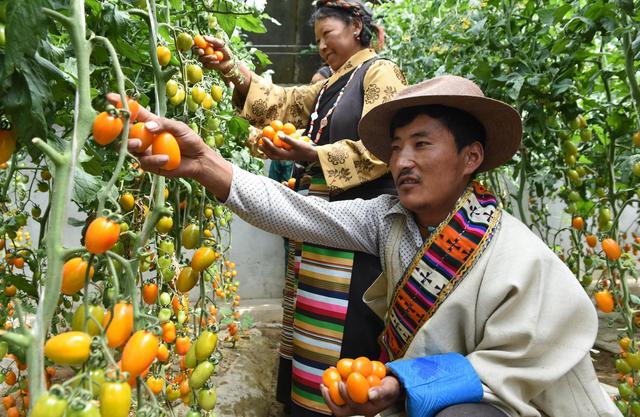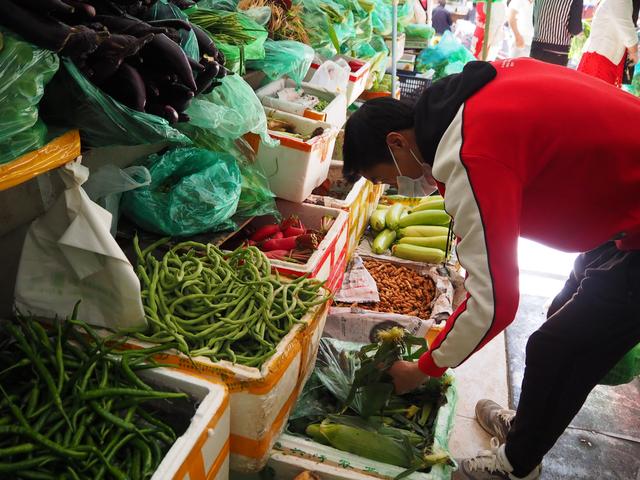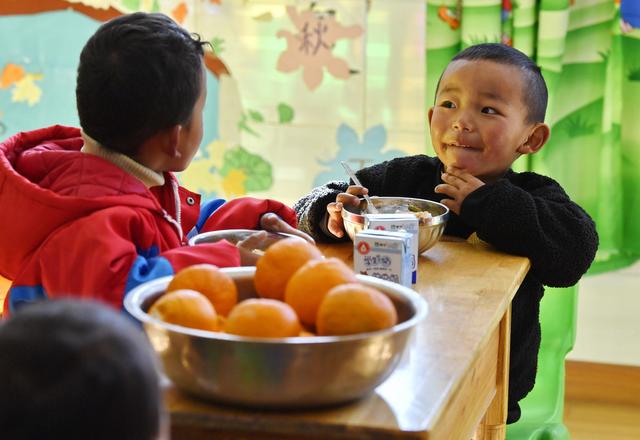
01:14
According to the statistics of Xizang Autonomous Region government, thanks to the expansion of vegetable planting area in plateau and the popularization of healthy eating concept, compared with the initial period of the 13th Five-Year Plan, in 2020, the per capita food consumption of Tibetan farmers and herdsmen decreased by 126kg, and the per capita vegetable consumption increased by 23kg. The food consumption of Tibetan people changed from staple food to non-staple food, and the diet structure of plateau people became more diversified and healthy.
Since the peaceful liberation of Tibet for 70 years, the Party and the government have always regarded the "vegetable basket" project as an important task to improve people’s livelihood. By promoting the construction of protected vegetable production bases, cities and towns have solved the constraints of climate and other factors on vegetable production, and the vegetable production capacity has been significantly improved. In 2020, the vegetable planting area in Tibet will reach 258,200 hectares, with an annual output of 843,400 tons. According to the latest population data of 3,648,100 in Tibet, the per capita possession of local vegetables exceeds 230 kilograms.

Vegetable farmers in Bailang County, Shigatse City, Tibet are picking in greenhouses (photo taken on May 28, 2016). Xinhua News Agency reporter Jue Guo photo
Early in the morning, Lausanne, a citizen of Lhasa, came to the Bayi Agricultural Products Market in Lhasa, not far from home, to buy food.
"In the past, Baba was the staple food for three meals a day. Now, I only eat Baba for breakfast, and I basically eat stir-fry and rice at noon and evening." Lausanne said with a smile, "I couldn’t eat vegetables before, but now I can buy all kinds of vegetables and fruits."
Daguo, from Ningzhong Township, Dangxiong County, is a merchant in Bayi Agricultural Products Market. His booth is full of fresh yak meat. Not far away, Wu Fangzhen, a fruit seller from Chongqing, ushered in the first transaction after the stall-a Tibetan aunt bought a bag of fresh air-delivered lychees.
"I have been in Tibet for almost 20 years. At first, I washed dishes in restaurants in Lhasa. Later, with savings, I took a fancy to Lhasa’s spending power and sold fruits." Wu Fangzhen said.
The small booth is filled with a dazzling array of fruits, including bananas and apples, as well as tropical fruits such as durian and jackfruit. Customers who come to buy are in an endless stream, many of whom are regular customers.

Lhasa citizens choose vegetables at Bayi Agricultural Products Market (photo taken on June 4, 2021). Xinhua News Agency reporter Jin Yiqing photo
In old Tibet, vegetables were synonymous with luxury goods, and eating vegetables was the privilege of the upper class aristocrats. Many serfs never even tasted vegetables all their lives.
On May 23, 1951, the Central People’s Government and the local government of Tibet signed the Agreement on Measures for the Peaceful Liberation of Tibet, and Tibet was peacefully liberated. The following year, soldiers of the People’s Liberation Army stationed in Lhasa reclaimed more than 2,300 mu of wasteland on a barren beach in the western suburbs, and set up a "Bayi Farm" with more than 300 people, which not only planted highland barley, but also planted Chinese cabbage, radish, potatoes, tomatoes, peppers, cucumbers, apples and other fruits and vegetables.
Tan Rongsheng, the son of Tan Guansan, the former political commissar of the 18th Army, said that the output of vegetables planted by the People’s Liberation Army reached the highest level in Tibet at that time. Many people couldn’t believe their eyes. They didn’t expect such good vegetables to grow on the land where they lived for generations.
According to Deji Zhuoga, Chairman of the Board of Supervisors of Lhasa Pure Land Bayi Farm Co., Ltd., Bayi Agricultural Products Market belongs to Bayi Farm, which is still able to continuously produce fruits and vegetables and contribute to the balanced diet of Lhasa citizens.

Children at Hongxing Community Bilingual Kindergarten in Jixiong Town, Gongga County, Shannan City are having lunch (photo taken on November 25, 2020). Xinhua News Agency reporter Zhang Yufeng photo
The changes in the diet structure of plateau people are not only reflected in Lhasa. In Ali area, known as the "roof of the world", with the completion of vegetable production bases in recent years, local people have also eaten "home-grown" fresh vegetables, ending the history of little local vegetable output and relying on long-distance transshipment from other places.
Gaize County is a pure animal husbandry county with animal husbandry as its pillar industry in Ali area. The long-term shortage of vegetable supply led to the imbalance of local people’s diet structure, which increased the risk of cardiovascular diseases and was not conducive to the improvement of physical fitness and health level. Today, the vegetable shed in Gaize County Industrial Park is full of spring, and 33-year-old Yang Jin is working.
"In the past, we seldom ate green leafy vegetables. Now that we have eaten our own vegetables, we still have a net income of 3,000 yuan per month, and we are practical and happy. " Yang Jin said.
Text reporter: Si Yuan, Jin Yiqing.
Photo shoot: Jin Yiqing, Zhang Rufeng, Jueguo
Video shooting: Si Yuan
Poster shooting: Pubuzhaxi
Poster production: Zhang Chen, Tenzin Nubu
Reporting/feedback
关于作者